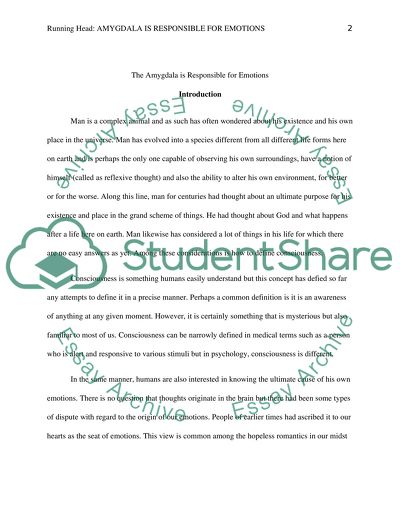Cite this document
(A Very Strong Link Between the Amygdala and Emotions Essay Example | Topics and Well Written Essays - 1750 words, n.d.)
A Very Strong Link Between the Amygdala and Emotions Essay Example | Topics and Well Written Essays - 1750 words. https://studentshare.org/environmental-studies/1411142-a-very-strong-link-between-the-amygdala-and-emotions
A Very Strong Link Between the Amygdala and Emotions Essay Example | Topics and Well Written Essays - 1750 words. https://studentshare.org/environmental-studies/1411142-a-very-strong-link-between-the-amygdala-and-emotions
(A Very Strong Link Between the Amygdala and Emotions Essay Example | Topics and Well Written Essays - 1750 Words)
A Very Strong Link Between the Amygdala and Emotions Essay Example | Topics and Well Written Essays - 1750 Words. https://studentshare.org/environmental-studies/1411142-a-very-strong-link-between-the-amygdala-and-emotions.
A Very Strong Link Between the Amygdala and Emotions Essay Example | Topics and Well Written Essays - 1750 Words. https://studentshare.org/environmental-studies/1411142-a-very-strong-link-between-the-amygdala-and-emotions.
“A Very Strong Link Between the Amygdala and Emotions Essay Example | Topics and Well Written Essays - 1750 Words”. https://studentshare.org/environmental-studies/1411142-a-very-strong-link-between-the-amygdala-and-emotions.


